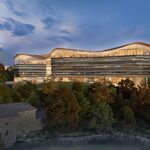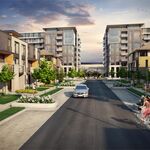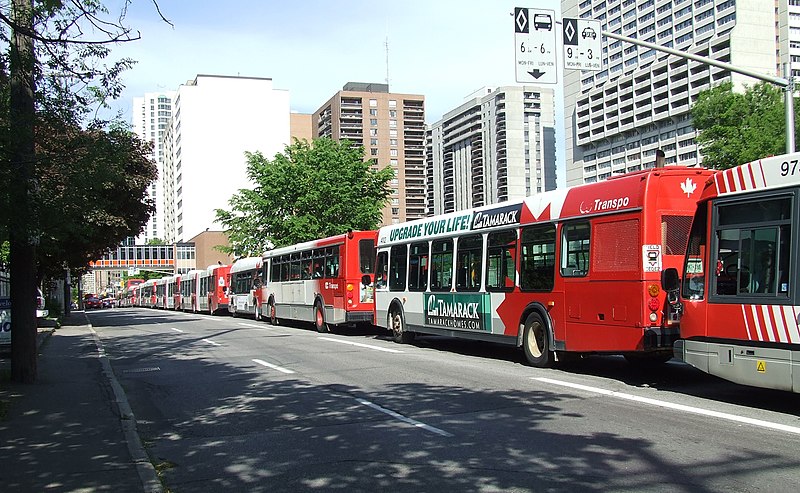Because buses DO NOT simplycross over the painted line on the road, and probably are not allowed without authorization. For the record, I have seen the Transitway blocked at stations with passing lanes because of long dwell times(people trying to cram into a already packed 95/97, instead of waiting for the next bus, and holding up buses behind).
Times like that don't tend to last very long. You may have a small jam at a station but because there is a passing lane it can usually work itself out quick enough. Even downtown buses routinely use the other lanes on Slater and Albert to pass. The reason all those buses were backed up in that picture was a combination of construction on the transitway itself and an accident. If there were no accidents or lane closures, if buses could use the extra lane on Slater and Albert to pass at all times, and there wasn't the bottleneck at Rideau, the system would probably not really see any backups even during rush hour. Of course the only way they can fix it is with a tunnel and at this point in the cities development LRT now makes sense because even a BRT tunnel won't be able to handle the kind of transit growth the city wants.
BRT is failing in Ottawa only because it is so successful. I cannot wait for LRT. This project is very exciting and once construction begins I will probably spend some free days wandering around the city just seeing what sort of development is being made on the project (when work becomes visible). But, Canadian cities have had 50 years of growth that was centred around the car. BRT is one way you can provide fast, reliable transit to less dense areas by making incremental, reasonably priced investments. Canadian cities are growing in a different manner than they used to and maybe in 20 years time more and more suburbs will be designed or developed enough to support LRT. Right now, you have to serve what exists though. Ottawa needed, and still needs BRT, in order to have developed the transit ridership it has, and to create the demand to now justify a high capacity LRT system.
, the City is planning to convert the O-train to LRT,and run it to Riverside South. Which is outside the Greenbelt last time I checked. Extend the LRT to Barrhaven, along the future southwest Transitway and give Barrhaven a reason to densify.
The main reason it is going to Riverside is that it is relatively easy and cheap to do so. If the line is not going to be used for freight or heavy rail, then LRT makes complete sense. I think the total cost to electrify, double track, add a few more stations, and send the existing O-Train line into Riverside and the airport is about $700 million. It also serves a lot of communities, and Carelton. Even in its current incarnation the inner city communities are seeing huge benefits from it. Compare that with an extension from Baseline to Barrhaven. Yes you are connecting Barrhaven to downtown, which is a good thing, but there isn't a lot of high density communities, or schools, or important nodes (like an airport) in between. Not to mention that it would have to create a BRT/LRT right of way with grade separations where it currently uses Woodroffe (because there is no free land to build it easily). For what it would cost (which would likely be just as much as the whole N-S LRT line) and the benefits you get from it, it is just not worth it.
And yes you can extend the N-S line at Riverside but the routing would be rather convoluted and still expensive once you add bridges, grade separations, etc, etc. It also would not provide a route as direct and fast as a Woodroffe LRT would.






